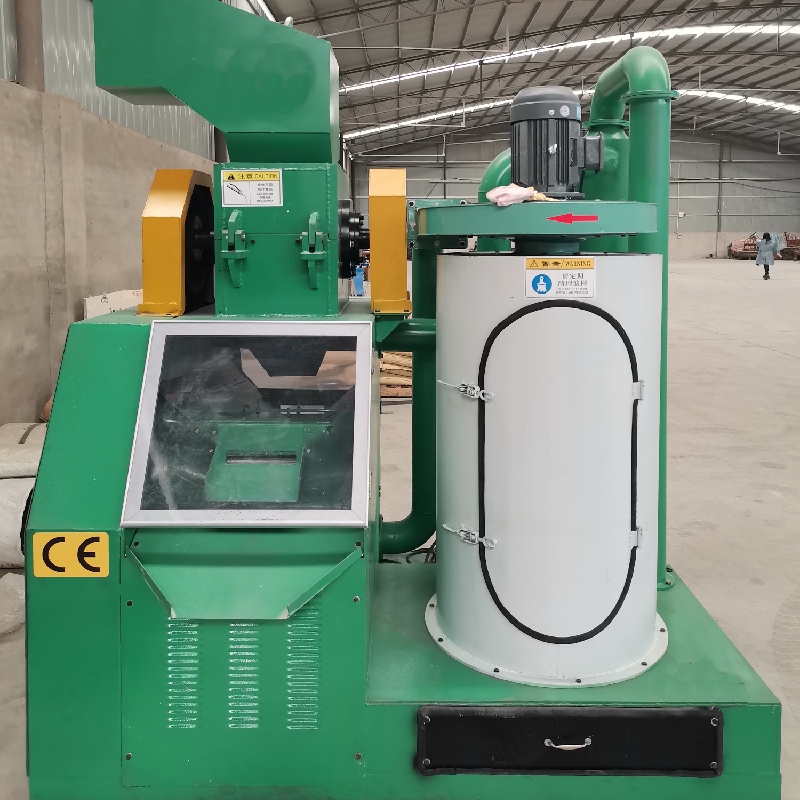
Oct . 25, 2025 13:50 Back to list
If you’ve spent time in a scrap yard or an e-waste line, you already know: separating copper cleanly is where profits are made. From Dafu Village, Qingyuan Town, Baoding City (Hebei Province) comes a line of machines I’ve seen popping up more often on the floor—Copper Wire Granulators designed for car harnesses, communication cables, and odds-and-ends down to 0.02 mm filaments and up to chunky 50 mm cables. Big range, small drama.

Copper supply jitters, stricter waste rules, and, frankly, better separation tech are reshaping the recycling lane. Plants want higher purity with less handpicking. To be honest, downtime tolerance is near zero now. That’s why you see enclosed granulation lines with air and electrostatic separation, HEPA-ready dust control, and PLCs that an operator can learn in a week.

| Spec (typical) | Value |
|---|---|
| Capacity | ≈ 100–1,000 kg/h (depends on mix, moisture) |
| Wire diameter range | 0.02–50 mm |
| Copper purity | up to 99–99.8% after refinement |
| Installed power | ≈ 12–65 kW |
| Noise | ≤ 75 dB(A) at 1 m (enclosed) |
| Dust emissions | ≤ 5 mg/m³ with proper filtration |
| Blade life | ≈ 600–1000 h before regrind |
| Controls | PLC + VFD, overload + jam sensors |

Light mixed cable streams, factory offcuts, and post-demolition wire are the sweet spot. Many customers say the biggest “surprise” was the reduction in hand sorting; air plus electrostatic separation pulls the last stubborn plastic bits. Another quiet win: predictable copper granule size downstream for melting or resale.
| Vendor (example) | Capacity band | Separation | After-sales | Lead time | Price band |
|---|---|---|---|---|---|
| OW Recycling (Hebei) | ≈ 100–1,000 kg/h | Air + electrostatic | Remote + on-site (regional) | around 25–45 days | Value-focused |
| European maker A | ≈ 200–1,500 kg/h | Air + optical options | Global network | 6–12 weeks | Premium |
| Asia-Pacific maker B | ≈ 80–600 kg/h | Air only | Remote-first | 3–6 weeks | Budget |


In mixed harness lines, I’ve seen Copper Wire Granulators deliver ≈99% copper recovery with trimmed rework. One auto dismantler reported around 18% OEE lift after adding electrostatic cleanup; a telecom recycler cut hand-sorting hours by roughly a third. Operators like the jam-sensor logic—saves shafts and tempers.
Certifications to check: CE, ISO 9001 for quality systems, ISO 14001 for environmental management, and RoHS-aligned components when processing compliance-driven waste streams.

Compared with stripping-only setups, Copper Wire Granulators handle thin, oxidized, and composite cables without fuss—and with better material accountability. The kicker is consistent granule output for easier selling and smelting. I guess that’s why plants keep upgrading.
Latest news
Trusted Double Shaft Shredder Supplier | Durable Industrial & Recycling Solutions
NewsNov.24,2025
Double Shaft Shredder Price Explained: Global Trends, Benefits & Vendor Comparisons
NewsNov.24,2025
Expert Insights into Double Shaft Shredder Factory: Boosting Global Recycling Efficiency
NewsNov.23,2025
Leading Double Shaft Shredder Suppliers for Industrial Recycling and Waste Management
NewsNov.23,2025
Leading Double Shaft Shredder Manufacturers | Durable & Sustainable Industrial Shredders
NewsNov.23,2025
Understanding Double Shaft Shredder Machine Price: Buyers’ Guide & Global Insights
NewsNov.22,2025